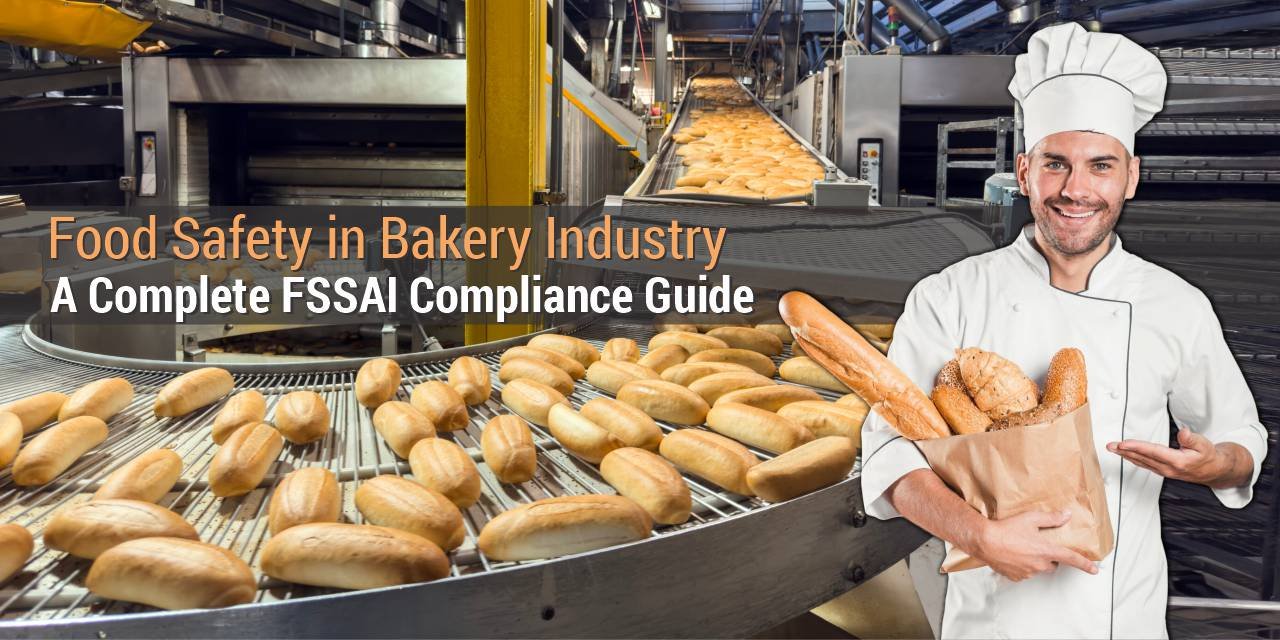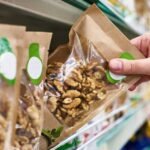Learn how to ensure food safety in bakery industry with this complete FSSAI compliance guide. Covers hygiene, pest control, labelling, allergen management, and sanitation best practices for modern bakeries.
The bakery industry has come a long way from producing just cakes and bread. Today, it includes a wide variety of products such as cookies, puffs, toast, and macaroons. With improved technical knowledge and creative ideas, bakeries have grown rapidly, offering customers more choices than ever before.
This growth is mainly due to two factors. The first is continuous innovation, which has led to the development of specialized products that use new types of ingredients such as fillings, flavors, and toppings. The second is the increasing number of people taking up baking as a profession, leading to a wider range of products and more job opportunities. As consumers are willing to pay premium prices for quality baked goods, the industry is expected to keep expanding in the years to come.
For a detailed overview of how the sector has evolved and its current growth trends, you can explore the article India’s Bakery and Confectionery Industry.
However, despite its growth, a large part of the bakery sector still operates in an unorganized manner. This increases the risk of food safety lapses that can harm consumers and invite legal action from the Food Safety and Standards Authority of India (FSSAI).
FSSAI Compliance in Bakeries: Key Points
Understanding FSSAI Compliance in Bakeries
The Food Safety and Standards Act, 2006, requires all bakery businesses to be registered or licensed under the FSSAI. The type of registration depends on the size and turnover of the business. Bakeries must also follow the sanitary and hygienic requirements mentioned in Part II of Schedule 4 of the Food Safety and Standards (Licensing & Registration of Food Businesses) Regulations, 2011.
By following these guidelines, bakeries can ensure that their products are not only tasty but also safe for consumption. Maintaining compliance also helps build trust with consumers and supports the long-term reputation of the business. Those planning to start or expand their own unit may find it useful to read How to Be a Bakery Industry Entrepreneur.
Managing Waste and Preventing Pest Problems
Where food is prepared, pests are always a potential problem. In bakeries, this risk is even higher because of the constant availability of food sources. For this reason, both waste management and pest control are critical components of food safety.
A bakery must have a clear pest control program that identifies likely pests and uses safe, non-toxic chemicals to control them. Even when pest control services are outsourced, the bakery owner or operator remains responsible for ensuring proper implementation. Regular monitoring, proper documentation, and corrective measures are essential. Clean and timely waste disposal also helps keep pests away and prevents contamination.
Cleaning and Sanitation in Bakery Operations
Cleaning and sanitation are particularly challenging in bakeries because the products contain high amounts of fat and oil. Residues from cream, dough, or fillings can easily accumulate on trays, mixers, and other equipment if not cleaned properly.
To maintain hygiene, bakeries must use clean, potable water for washing and ensure that all equipment is made of rust-free, food-grade materials such as stainless steel or certified plastic. Cleaning agents should be safe for use on food-contact surfaces, and waste should be disposed of regularly. Proper stock rotation using the “first in, first out” or “first expired, first out” method helps maintain freshness and prevent spoilage. Temperature checks during baking and storage are also crucial for ensuring consistent product quality and safety.
For a better understanding of modern equipment and its role in maintaining hygiene, refer to An Introduction to Bakery Machinery.
Preventing Cross-Contamination in Bakeries
Cross-contamination occurs when bacteria or allergens transfer from one food to another. In bakeries, it can happen between products containing eggs and those that are egg-free, or between vegetarian and non-vegetarian products such as puffs and pizzas.
To reduce this risk, production should be planned so that vegetarian products are made before non-vegetarian ones. Separate storage areas, tools, and utensils should be used for different categories of products. Workstations should be arranged to prevent ingredients from mixing accidentally. Even small changes in layout and workflow can make a big difference in preventing cross-contamination.
Personal Hygiene and Worker Health
The personal hygiene of bakery workers directly affects food safety. Employees must be free from any illness or infection and maintain proper grooming standards. Hairnets, clean uniforms, and trimmed nails are basic requirements.
All workers should undergo a medical examination at least once a year, and any health issues should be treated promptly. Employees handling food must also receive the typhoid vaccine as recommended. These steps, though simple, are vital in ensuring that bakery products remain safe for consumers.
Packaging and Labelling Requirements
Packaging plays an important role in protecting bakery products from contamination and maintaining their freshness. Polyethylene, whether LDPE or HDPE, is the most commonly used packaging material and must meet the food-grade standards outlined in IS:10146.
Labelling is equally important. Every bakery product must display its name, a vegetarian or non-vegetarian symbol, the FSSAI license number, and the manufacturer’s name and address. The label must also include nutritional information such as energy value, protein, carbohydrate, sugar, and fat content per 100 grams or per serving. If the product makes any nutrition-related claims, those specific nutrients must also be mentioned.
Date labelling is another key requirement. Products with a shelf life of more than three months may show only the month and year of manufacture, while shorter shelf-life products must include the full date. For items like bread, the label should clearly mention the number of days within which the product should be consumed.
To learn more about packaging innovations and best practices, read Packaging of Bakery Products.
Allergen Control in Bakery Products
Many bakery ingredients, such as milk, wheat, and nuts, are common allergens. Even though FSSAI has not made allergen labelling mandatory yet, many bakeries voluntarily include this information on their packaging to ensure consumer safety.
Since most bakery products naturally contain gluten, it is nearly impossible to make them completely allergen-free. However, products with gluten content below 20 ppm can be labelled as “gluten-free,” while those between 20 ppm and 100 ppm can be labelled as “low gluten.”
There are also growing efforts to make baked goods healthier and more inclusive. Fortifying bakery products with ingredients like soy or essential micronutrients not only adds nutritional value but also aligns with global health initiatives. Articles such as Fortification of Bakery Products, Defatted Soy Flour in Bakery Products, and Soy-Fortified Biscuits: Development and Evaluation provide useful insights into these trends.
Conclusion
The bakery business in India continues to grow and evolve, offering vast opportunities for innovation and entrepreneurship. However, success in this sector depends not just on creativity or taste, but on a strong commitment to food safety. By following FSSAI guidelines, maintaining hygiene, and ensuring proper labelling and allergen control, bakery operators can protect consumers’ health while building a trustworthy and sustainable brand.
FAQs on Food Safety in the Bakery Industry
FSSAI registration ensures that bakeries meet national food safety standards. It helps maintain product quality and prevents legal penalties for non-compliance.
Bakeries must maintain clean equipment, use potable water, control pests, and ensure that employees follow strict hygiene practices such as wearing hairnets and clean uniforms.
Cross-contamination can be avoided by separating storage and preparation areas for vegetarian and non-vegetarian products, using colour-coded tools, and following a proper production sequence.
Labels must include the product name, vegetarian or non-vegetarian symbol, FSSAI license number, nutritional facts, manufacturer details, and manufacturing and expiry dates.
Although not yet mandatory, many bakeries voluntarily include allergen information, such as the presence of milk, nuts, or gluten, to ensure consumer safety and transparency.
Have a news or topic to share with industry? Write to us editorial@pfionline.com
















